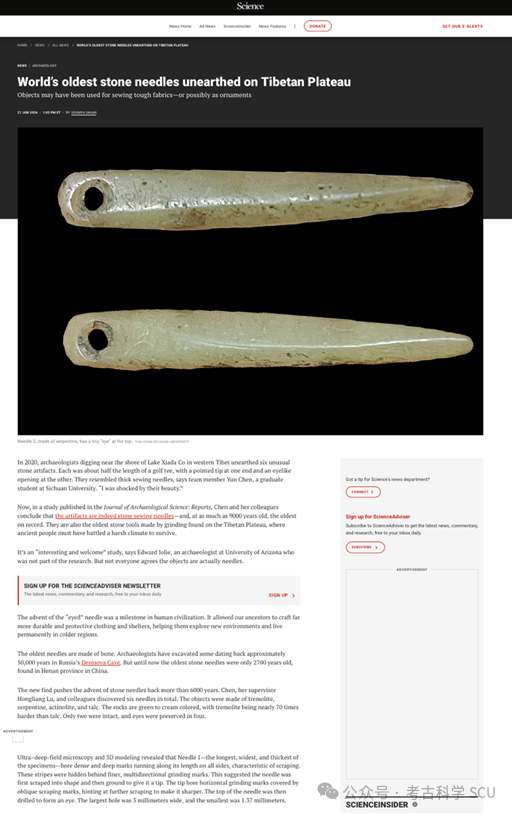Science reports on Center for Archaeological Science, Sichuan University's research on the earliest stone needles in western Tibet

Recently, Prof. Lv Hongliang's team from the Center for Archaeological Science, Sichuan University published a research paper titled "The world鈥檚 earliest ground stone needles: Archaeological evidence from the Early Holocene of the Western Tibetan Plateau" in the international journal Journal of Archaeological Science: Reports. The publication of the article has attracted widespread academic attention. Among them, Science AAAS, a top international academic magazine website, conducted an online interview with Lv Hongliang and others, and reported it with the title "World's Oldest Stone Needles Unearthed on Tibetan Plateau" (https://www.science.org/content/article/world-s-oldest-stone-needles-unearthed-tibetan-plateau), and paid attention to the discussions caused by the article.
The report quoted the opinions of other scholars, fully affirming the research results of the Lv Hongliang team. For example, Prof. Edward A. Jolie from the University of Arizona believes that this is an interesting and highly anticipated study. However, some scholars hold different views. Prof. Francesco d鈥橢rrico from the University of Bordeaux pointed out that the 鈥渟tone needles鈥� mentioned in the original text have blunt tips and soft materials, so they are not suitable for sewing. Combining their characteristics as symbolic ocher pigments, he cautiously interprets them as personal ornaments. In addition, Jolie, a registered citizen of the Muscogee (Creek) Nation with Native American ancestry from Oklahoma, keenly discovered that the stone needle site mentioned in the original text is located near a lake. He believes that these stone needles may have the function of weaving fishing nets and hopes that the research team can consider this possibility.
In addition, the well-known science website All That's Interesting interviewed the original author by email and reported the research results, pointing out at the end of the report that whether these stone tools were used as
